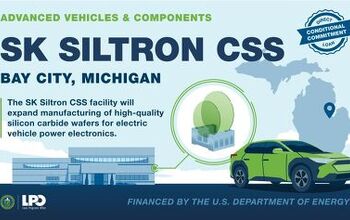DOE Loan Program Knocked For Lax Oversight, Risk-Related Costs
The Department of Energy’s Advanced Technology Vehicle Manufacturing (ATVM) loan program has come under fire from the Government Accountability Office before, and was the subject of a patronage investigation by the Center for Public Integrity and ABC News. And the bad news keeps piling up, with yet another nasty GAO report [ PDF] taking the program to task for running up higher-than-expected lending costs due to “industry risks” and for failing to provide required technical oversight.
On the funding front,
The loans made to date represent about a third of the $25 billion authorized by law, but the program has used 44 percent of the $7.5 billion allocated to pay credit subsidy costs, which is more than was initially anticipated… At this rate, the $4.2 billion remaining to be used to pay credit subsidy costs will not be sufficient to enable DOE to loan the full $25 billion in loan authority. These higher credit subsidy costs were, in part, a reflection of the risky financial situation of the automotive industry at the time the loans were made… [Emphasis added]
As of May 9, 2011, DOE reported that 16 projects seeking a total of $9.3 billion in loans—representing $3.5 billion in credit subsidy costs—were under consideration.
Meanwhile, three out of four borrowing firms have already misused funds, according to the report… although the DOE’s auditors do seem to have kept a lid on the situation.
Staff also rely on outside auditors to confirm whether funds have been used for allowable expenses. As of February 2011, the auditors had reported instances in which three of the four borrowers did not spend funds as required. According to ATVM officials, these instances were minor—the amounts were small relative to the total value of the loans—and the inappropriate use of funds and the borrowers’ practices have been corrected.
So the misspending was small… compared to the billions already loaned. Which means what? Millions of dollars? Tens of millions? Did someone leave a couple of twenties under the cushions of the breakroom? It’s not at all clear at this point, but what is understood is the fact that the DOE’s lack of technical oversight is at least as troubling as the misspending.
According to our review, several projects needing additional technical oversight are under way but the program, as of February of 2011, had not brought in additional technical oversight expertise to supplement program staffs’ oversight. For example, ATVM officials identified one borrower with projects at a stage requiring heightened technical monitoring; however, ATVM program staff alone had monitored the technical progress of the project. ATVM officials told us that the manufacturer has experience with bringing vehicles from concept to production so additional technical oversight expertise has not been needed, despite the procedures’ calling for it. Further, according to documents we reviewed, at the time of our report, four borrowers—rather than the single one identified by ATVM—had one or more projects that, according to the program’s procedures, had already reached the stage requiring heightened technical monitoring. Because ATVM staff, whose expertise is largely financial rather than technical, had so far provided technical oversight of the loans without the assistance of independent engineering expertise, we found that the program may be at risk of not identifying critical deficiencies as they occur and DOE cannot be adequately assured that the projects will be delivered as agreed.
And, if you really think about it, it’s amazing that the ATVM’s auditors found misspending at all, considering the program’s staff doesn’t actually have the expertise to know if loan recipients are delivering on their proposals. Which is almost appropriate considering the report finds that
Although the ATVM program has established performance measures for assessing the performance of ATVM-funded vehicles relative to the performance of similar vehicles in model year 2005, the measures stop short of enabling DOE to fully determine the extent to which it has accomplished its overall goal of improving the fuel economy of all passenger vehicles in use in the United States. The measures stop short because they do not isolate the impact of the program on improving U.S. fuel economy from fuel economy improvements that might have occurred in the absence of the program—by consumers investing in more fuel efficient vehicles not covered by the program in response to high gasoline prices, for example. In addition, the ATVM program lacks performance measures that will enable DOE to assess the extent to which it has achieved the other two goals of the program—advancing automotive technology and protecting taxpayers’ financial interests.
At this point, it almost seems like George Bush had it right the first time, and that these mismanaged loans to hugely risky firms like Fisker and Tesla should have just been used to fund the “unavoidable” Detroit bailout.
More by Edward Niedermeyer
Latest Car Reviews
Read moreLatest Product Reviews
Read moreRecent Comments
- Varezhka Maybe the volume was not big enough to really matter anyways, but losing a “passenger car” for a mostly “light truck” line-up should help Subaru with their CAFE numbers too.
- Varezhka For this category my car of choice would be the CX-50. But between the two cars listed I’d select the RAV4 over CR-V. I’ve always preferred NA over small turbos and for hybrids THS’ longer history shows in its refinement.
- AZFelix I would suggest a variation on the 'fcuk, marry, kill' game using 'track, buy, lease' with three similar automotive selections.
- Formula m For the gas versions I like the Honda CRV. Haven’t driven the hybrids yet.
- SCE to AUX All that lift makes for an easy rollover of your $70k truck.

































Comments
Join the conversation
Readers should go to the website: http://corruptiondoe.weebly.com For many expanded details on this.